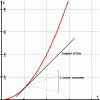Mikebits
Well-Known Member
Well you probably have the correct answer, but that doesn't mean you aren't a failure
Sorry, just kidding, couldn't help myself, left handed you know.
Lefty
PS: and yea, if this thread had started in a bar the fight would have long been broken up and we all would be recovering with hangovers and wondering WTF.
Oh come on, we would break out our LED flashlights and argue over who's light has more lumens. Of course the hangover would follow



